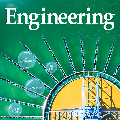Data-driven models created by machine learning, gain in importance in all fields of design and engineering. They, have high potential to assist decision-makers in creating novel, artefacts with better performance and sustainability. However,, limited generalization and the black-box nature of these models, lead to limited explainability and reusability. To overcome this, situation, we propose a component-based approach to create, partial component models by machine learning (ML). This, component-based approach aligns deep learning with systems, engineering (SE). The key contribution of the component-based, method is that activations at interfaces between the components, are interpretable engineering quantities. In this way, the, hierarchical component system forms a deep neural network, (DNN) that a priori integrates information for engineering, explainability. The, approach adapts the model structure to engineering methods of, systems engineering and to domain knowledge. We examine the, performance of the approach by the field of energy-efficient, building design: First, we observed better generalization of the, component-based method by analyzing prediction accuracy, outside the training data. Especially for representative designs, different in structure, we observe a much higher accuracy, (R2 = 0.94) compared to conventional monolithic methods, (R2 = 0.71). Second, we illustrate explainability by exemplary, demonstrating how sensitivity information from SE and rules, from low-depth decision trees serve engineering. Third, we, evaluate explainability by qualitative and quantitative methods, demonstrating the matching of preliminary knowledge and data-driven, derived strategies and show correctness of activations at, component interfaces compared to white-box simulation results, (envelope components: R2 = 0.92..0.99; zones: R2 = 0.78..0.93).
翻译:暂无翻译



